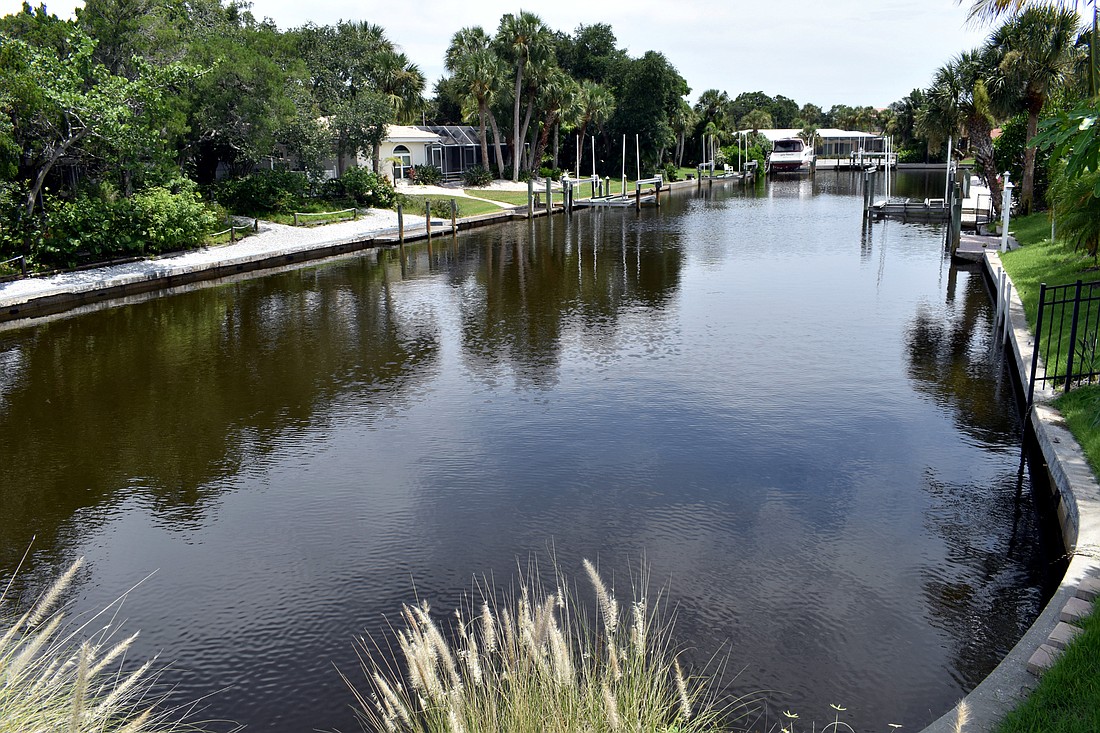- November 23, 2024
-
-
Loading

Loading

A spill that left 36,000 gallons of raw sewage in Siesta Key’s Grand Canal left residents questioning the effectiveness of the county’s pump stations and the use of emergency-alert systems.
At 4:30 p.m. July 9, the Lockwood Ridge Booster Station failed, which caused untreated wastewater to spill into the Grand Canal. Around 14,700 gallons were recovered, and lime was spread in the vicinity of the station to help mitigate the effects of the spill, near 5200 Oakmont Place.
The pump station, which opened in 2017 after the county was ordered to shut down its wastewater treatment facility on Siesta Key, utilizes a large transmission main to transport sewage to the mainland for treatment.
During high-flow conditions, as was the case July 9, a booster pump on the transmission main activates automatically to help keep the flow moving, county spokesman Drew Winchester said. However, the starter motor on the diesel engine that powers the pump failed. While the pump was being repaired, sewage in the Master Pump Station spilled into the canal, something residents of Siesta Isles say they never want to see happen again.
“Sewage spills have become an increasingly common occurrence in Florida and even in the Sarasota area,” Siesta Isles Association President Pamela Akins said. “The entire Sarasota community should be concerned about the effect this has on our health and environment.”
Waters contaminated with wastewater overflow present several health risks to humans, such as gastrointestinal issues, E. coli, salmonella, hepatitis A and Giardia, according to Environment Florida.
The Florida Department of Health encouraged anyone who comes in contact with the Grand Canal waters to wash their hands thoroughly,
particularly children and older adults who have weakened immune systems.
Outside of human effect, raw sewage spills can trigger blooms of algae that suffocate wildlife, Environment Florida reports. And although sewage cannot directly lead to a red tide bloom, it can help feed one, which is something Sarasota’s Lorie Tiernay is concerned about.
“While the county is quick to deliver the message that sewage doesn’t create red tide, they also neglect to mention the fecal matter is full of nitrates, and red tide flourishes in a nitrate-rich environment,” Tiernay said.
Various lawmakers have attempted to create laws that punish governments for such spills. Sarasota Sen. Joe Gruters proposed a bill that would fine a city $1 for every gallon spilled. However, such efforts ultimately died in legislative session.
Winchester said the county is implementing additional safeguards, such as procedural changes; adding automation; and increasing inspections of the booster pump to prevent future spills. The booster pump station will be replaced within the next year.
Although this is one of the largest spills to happen this month, there have been seven reported spills in Sarasota County in the past 30 days, according to Florida Department of Environmental Protection records.
“If our county commissioners wanted to do their jobs and the right thing for community, this would be a priority on their agenda,” Tiernay said. “Instead, they keep planning more buildings, which ultimately means more people and more wastewater.”
County Commission Chairman Charles Hines has said the county is focused on water quality projects, such as the Dona Bay stormwater project and flipping Philippi Creek homes from septic to sewer, to help bring the issue to a head.
In addition to concerns about effects on Siesta Key’s waterway, Akins expressed concerns about the lack of communication regarding the spill.
The county utilizes an alert system called CodeRED to notify residents of any emergency situations, which does not include all wastewater spills. However, Winchester said the county agreed to notify residents of any facility issues.
“Unfortunately, the CodeRED was not initiated by the responding staff on the evening of July 9,” Winchester said.
A notification was sent out July 12 notifying residents that county staff was sampling bacteria levels in the water, which it will continue to do until levels return to normal.
The CodeRED procedures have been modified and will include notifications to all residents living adjacent to the Grand Canal if another spill occurs, Winchester said.